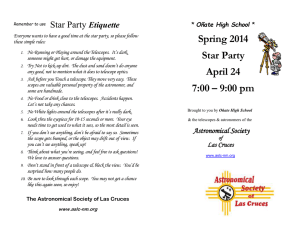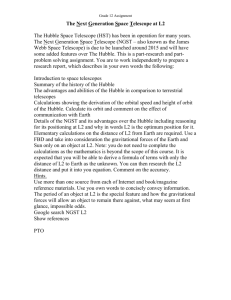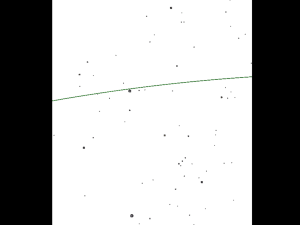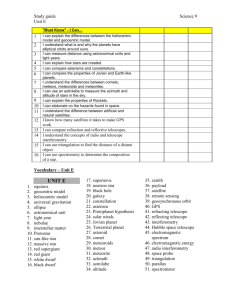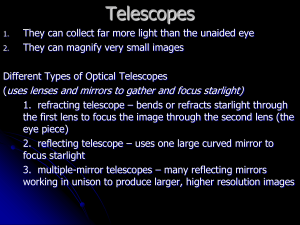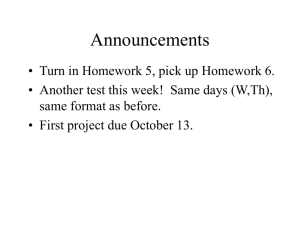RED-SHIFTING
advertisement
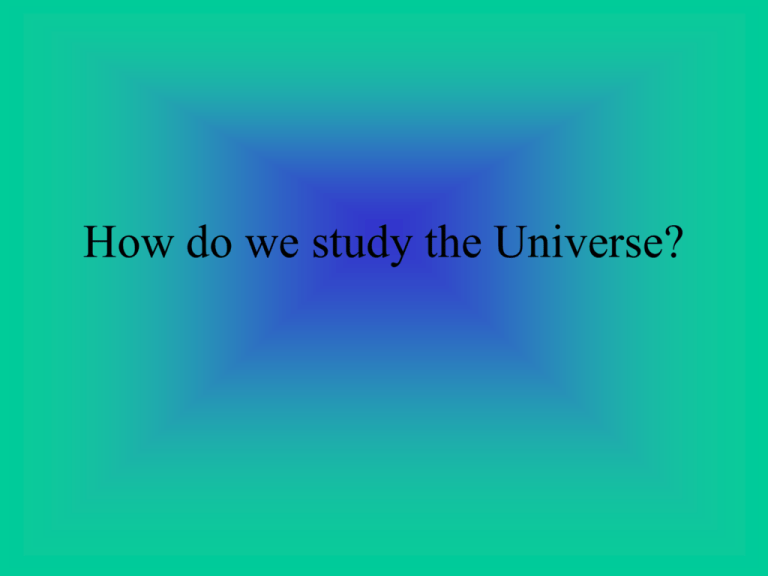
How do we study the Universe? SPECTROSCOPY • Uses visible wavelength split into colors Doppler shift • Wavelengths change when object is moving Red/ Blue Shift • RECEDING (moving away) objects show a INCREASE in WAVELENGTH- red shift • APPROACHING objects show a DECREASE in WAVELENGTHblue shift • Star Approaching •Star Receding RED-SHIFTING STAR (Moving Away From Us) BLUE-SHIFTING STAR (Moving Towards Us) Red or blue shift? sun Star MOVING AWAY from us. (RED-SHIFTING) REFERENCE SPECTRUM Mauna Kea Observatory Mauna Kea Aug. 2011 Optical telescopes • Need clear weather • Away from city lights (light pollution) • Above clouds (mountain tops) – Less distortion • Many in AZ and HI Kitt Peak, Arizona REFRACTING TELESCOPES Use multiple lenses to focus light and magnify images. The USNO 26-inch Refracting Telescope REFRACTORS •Lenses are expensive •Chromatic aberration (halo affect;bad) •good for observing solar system objects •See details (good contrast) Lowell Observatory, Flagstaff AZ discovered Pluto 24” refractor REFLECTING TELESCOPES Uses a series of mirrors to gather and focus light. Reflectors • Mirrors are cheaper • See farther than refractors – Lose detail • Can build larger (10 meters vs. 1 meter) • “Coma” problem “coma problem • Stars need edge of field have “tails” 8” REFLECTOR Keck Observatory 10 m reflector largest in world LBT Large Binocular Telescope • Two 8.4 m mirrors CATADIOPTRIC TELESCOPES combines the best features of refractors and reflectors Dobsonian telescope • • • • • Cheap Reflector need dark skies Only azimuth mount Good beginner telescope Radio telescopes • Gather incoming radio waves • Convert waves to colors • Produce false color images Radio telescopes • Best for out of solar system objects – Galaxies – Supernovas – quasars Very Large Array Socorro, NM • Arrays use many telescopes that act as one telescope Very Large Baseline Array Sites Hawaii California New Hampshire Kitt Peak, Washington New Mex. Texas Iowa New Mex. 40 meter radio telescope Green Bank, WV 305 meter Arecibo Radio Telescope Signal is received by telescope Signal is amplified Janskies Signal is converted to false colors Minutes SUPERNOVA REMNANT All declinations combined make a picture THE MOON A GALAXY Jupiter Planet forming Advantages of Radio Telescopes • Use anytime (day, clouds, etc) • No dome needed • Detect object much further away Infrared Advantages of Space Telescopes • No atm. Interference – See clearer • NOT CLOSER • Can detect wavelength that atm. blocks Hubble • reflector • Last service mission (2010) will keep operating to at least 2014 • In 2018 Hubble will be replaced by James Webb telescope (IR) James Webb telescope • Mission length: 5 years • Remain stationary above Earth Hubble vs. Webb Other space telescopes Spitzer infrared telescope launched 2003 GLAST- gamma ray telescope Chandra X-ray telescope launched 1999 HUT (HOPKINS UV TELESCOPE) Clumpy universe GALEX UV COBE microwave



